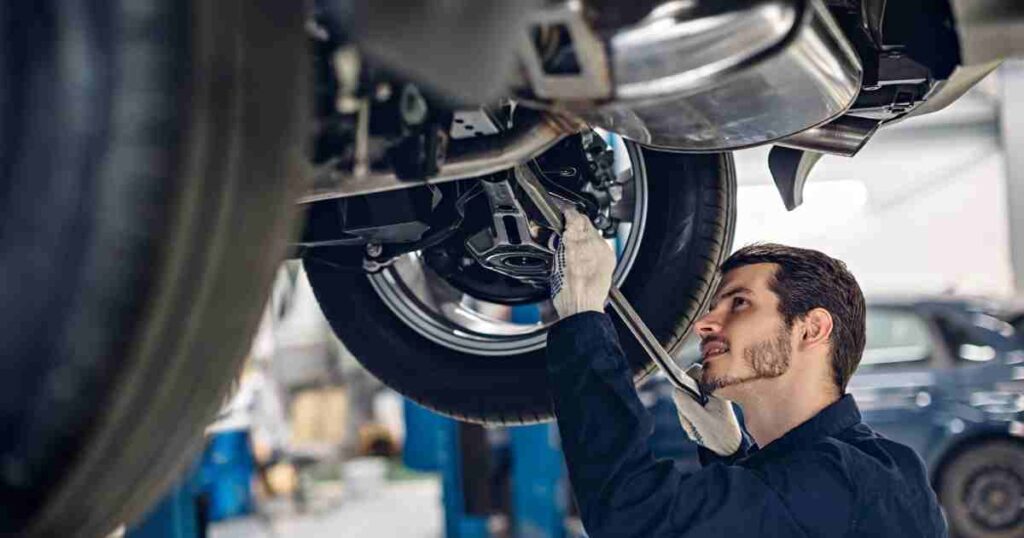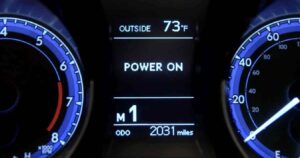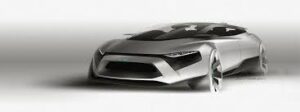Front-wheel drive (FWD) is the most prevalent drivetrain configuration and is utilized in a wide range of vehicles. In this setup, power is delivered directly to the front wheels, and a significant portion of the vehicle’s weight is concentrated over these wheels, aiding drivers in maintaining grip on slippery road surfaces.
If you’re shopping for a new car or have recently purchased one, you’ve likely come across the term “FWD” in vehicle specifications. But what exactly does FWD mean on a car?
In this comprehensive guide, we’ll unravel the mystery behind this acronym and provide you with a clear understanding of front-wheel drive (FWD) in automobiles. By the end of this article, you’ll not only know what FWD means but also its advantages, disadvantages, and when it might be the right choice for your driving needs.
Table of Contents
ToggleFront-Wheel Drive (FWD) Explained
Front-wheel drive, abbreviated as FWD, is a common drivetrain configuration in many cars on the road today. At its core, FWD means that the engine’s power is delivered to the front wheels of the vehicle.
In simpler terms, the front wheels are responsible for both steering and propelling the car forward.
One of the primary advantages of FWD is its simplicity. This drivetrain design is more straightforward and cost-effective to manufacture, making FWD vehicles often more affordable for consumers.
FWD cars tend to be more fuel-efficient because they are lighter than their rear-wheel drive counterparts.
FWD is well-suited for everyday driving scenarios, offering good traction on dry roads.
It provides stability and predictable handling, making it an excellent choice for city commuting and family cars.
FWD does have limitations, particularly in slippery or adverse weather conditions like snow or ice. Since the same wheels are responsible for steering and driving, traction can become compromised, leading to potential difficulties in maintaining control.

Advantages of Front-Wheel Drive
- Affordability: FWD vehicles are often more budget-friendly due to their simpler design and ease of manufacturing.
- Fuel Efficiency: FWD cars tend to be lighter, which translates to improved fuel economy.
- Predictable Handling: FWD offers predictable and stable handling characteristics, making it a suitable choice for everyday driving.
- Space Efficiency: The absence of a driveshaft to the rear wheels in FWD cars often results in more interior space, particularly in compact and midsize models.
- Traction on Dry Roads: FWD provides adequate traction on dry roads, ensuring a smooth and controlled driving experience.
- Reduced Maintenance Costs: FWD systems are generally less complex, which can result in lower maintenance and repair costs over time.
Disadvantages of Front-Wheel Drive
- Limited Traction in Adverse Conditions: FWD can struggle in slippery conditions like snow or ice, as the front wheels are responsible for both steering and propulsion.
- Less Ideal for High-Performance Vehicles: Enthusiast-oriented sports cars often favor rear-wheel drive (RWD) for its superior handling characteristics.
- Potential Torque Steer: FWD vehicles may experience torque steer, where the steering wheel can pull to one side during hard acceleration due to uneven power distribution.
- Weight Distribution: FWD cars typically have more weight over the front wheels, which can affect balance and handling.
- Reduced Towing Capacity: FWD vehicles generally have lower towing capacities compared to rear-wheel drive or all-wheel drive counterparts.

When Is Front-Wheel Drive (FWD) a Good Choice?
Front-wheel drive (FWD) is an excellent choice for individuals who prioritize affordability, fuel efficiency, and everyday usability in their vehicles. Here are situations where FWD can be a good fit:
- City Commuting: FWD vehicles excel in urban environments, offering predictable handling and space efficiency for city dwellers.
- Family Cars: Many family-oriented cars and crossovers come with FWD, providing ample interior space and cost savings.
- Fuel Economy: If fuel efficiency is a top priority, FWD cars tend to deliver better mileage.
- Mild Climates: In regions with mild weather and minimal snowfall, FWD can provide adequate traction for year-round driving.
- Budget Constraints: FWD cars are often more affordable to purchase and maintain, making them attractive to budget-conscious buyers.
FWD, RWD, AWD, and 4WD
Front-wheel drive (FWD): FWD is the most common drivetrain used in many of today’s passenger vehicles.
It directs the engine’s power equally to the front two wheels. Generally, FWD vehicles are more budget-friendly to produce, but they may not always provide the traction needed during Calgary’s winter months.
Rear-wheel drive (RWD): RWD is typically found in vehicles like pickup trucks, sports cars, and luxury sedans. In trucks, RWD offers better traction when carrying a heavy load. In sports cars and luxury sedans, RWD enhances control by distributing the vehicle’s weight more evenly.
Since the front wheels are not responsible for both driving and steering, RWD allows designers to optimize the suspension.
RWD vehicles may not be ideal for Calgary winters as they offer less traction on slippery roads. Many luxury RWD vehicles now come with all-wheel drive (AWD) as either a standard feature or an option.
All-wheel drive (AWD): As the name suggests, AWD sends power to all four tires of the vehicle. Depending on the vehicle, AWD can provide maximum traction during acceleration, making it especially useful in slushy road conditions and light off-road terrain.
AWD helps with both initial acceleration and maintaining momentum through mud and snow. Typically, AWD systems distribute power to either the front or rear wheels, shifting power to the axle with better traction when slippage is detected.
AWD systems are commonly found in most SUVs in Canada, as well as some cars and minivans.
Four-wheel drive (4WD): While 4WD and AWD are often used interchangeably in marketing, they have differences. 4WD is best suited for challenging off-road situations with low-traction surfaces.
However, it is also beneficial for driving in snowy conditions, providing more traction than standard FWD. Modern 4WD systems come in three types: full-time (always engaged), automatic (automatically switching between two- and four-wheel drive based on conditions), and part-time (requiring manual engagement by the driver).
Conclusion
IFWD stands for front-wheel drive, a common drivetrain configuration in many cars. Understanding what FWD means and its advantages and disadvantages is crucial when choosing the right vehicle for your needs. FWD offers affordability, fuel efficiency, and predictable handling, making it a suitable choice for city commuting and family cars in regions with mild climates. However, it may not be the ideal choice for those facing challenging winter conditions or seeking high-performance driving experiences. Ultimately, your choice should align with your priorities and the driving conditions you encounter most frequently.
























